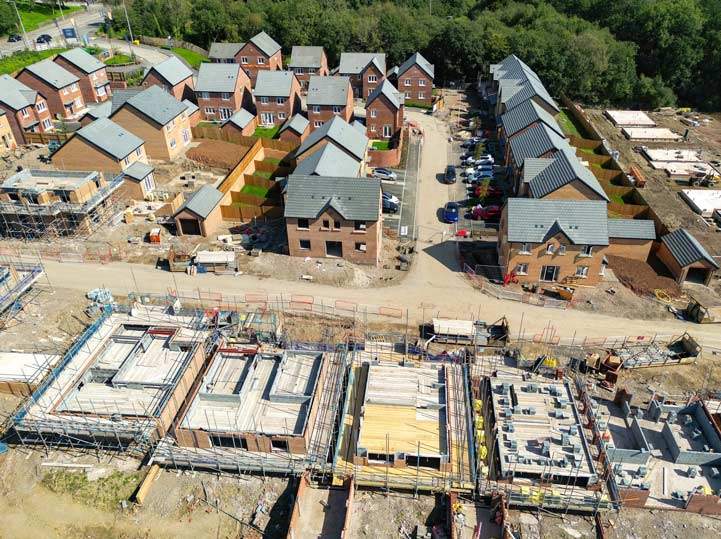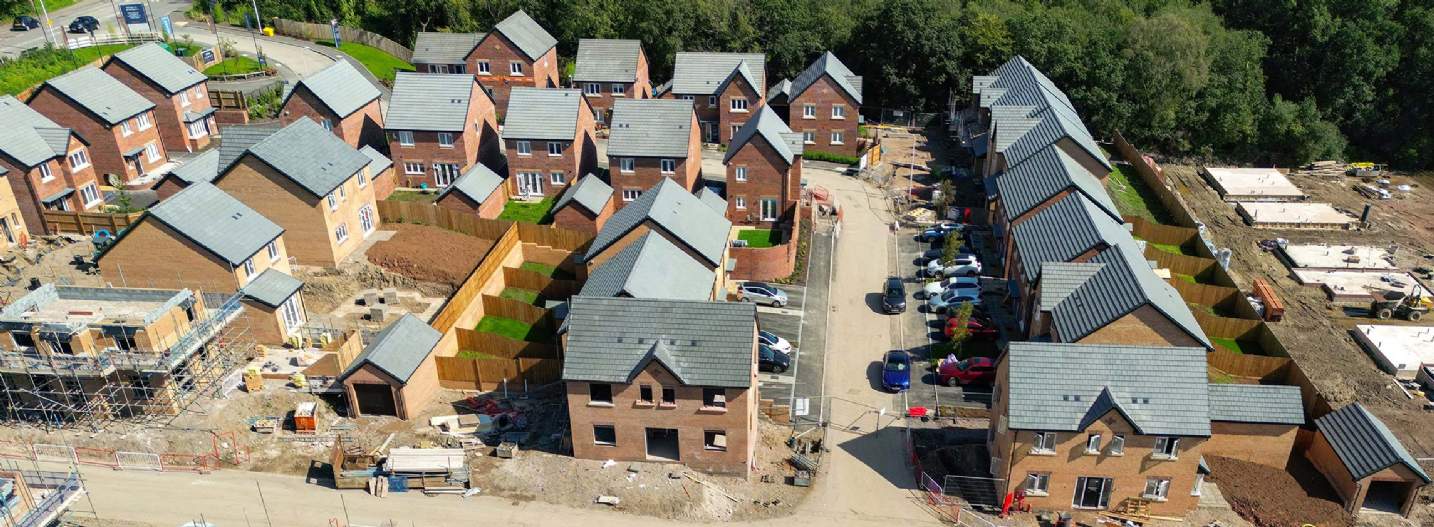There are no easy answers to the challenges presented, but solutions are needed to keep new homes being built
It is clear that there are some fundamental challenges for the Section 106 market, on both the demand and supply sides. But solutions are needed to secure future affordable housing supply and ensure the current problems do not present a barrier to private development.
The potential solutions can be put into three main categories:

1. Supporting demand
The long term solution is to restore financial capacity within the Housing Association sector. This should be a key priority for the new Government. It is likely to require substantial and long term commitments on social housing rents and grant funding, both for new homes and investment in existing housing stock.
Our modelling of sector finances shows that very substantial support is needed to restore capacity to a sufficient level to allow increased investment in new affordable homes. But even if such a package were forthcoming from the new Government, it would take until at least 2027 before Registered Providers were able to increase their investment in Section 106. So this is neither a quick nor an easy fix.
Solutions are needed to secure future affordable housing supply and ensure the current problems do not present a barrier to private development
Lydia McLaren, Associate Director, Residential Research
Housing Association development activity is currently focussed on delivering the grant funded development programme from Homes England and the Greater London Authority including Strategic Partnerships. Section 106 homes do not count towards those programme numbers. Greater flexibility from both agencies in allowing some grant funding to support Section 106 acquisition may help support demand in the short term. New flexibility on this from the Greater London Authority has already had some impact via the Accelerated Funding Route introduced in February 2024, but the need for additional capital investment from Registered Providers remains, which mitigates its impact.
An alternative short term solution would be for Homes England and the Greater London Authority to support the acquisition of Section 106 homes in a way that removes the capital investment needed from Registered Providers.
A structure could be created whereby Homes England and the Greater London Authority acquire Section 106 affordable housing and hold it for a period, with a view to selling it to local authorities and Housing Associations when financial capacity allows. The structure would mitigate the need for local authorities or Housing Associations to commit capital to acquiring Section 106. It would also require a Registered Provider to be the landlord of social housing tenants.
There are a number of options, including leasing arrangements or interest-free loans, which could achieve this. But they all require additional investment from the public sector.
2. Improving the nature of the supply
The need for Registered Providers to prioritise their investment activity has revealed the shortcomings of Section 106 supply and concerns around build standards. Customer satisfaction is another key concern, mainly the speed at which developers respond to defects and snagging issues. These are not new problems and don’t affect all providers, but they have gained greater prominence in the current market given the selectiveness of the limited pool of active buyers for Section 106. It highlights the mismatch between the homes acceptable to individual buyers compared to those that regulated landlords (with a responsibility to provide quality homes for their tenants in the long term) want in their portfolios.
Registered Providers are attempting to model the need for homes to be zero-carbon within their 30 year business plans. Private housing delivery in line with building regulations, even if it does include measures that move it towards compliance with the anticipated Future Homes Standard, is not at this level. “We’ll be back in there retrofitting within 10 years” was how one Housing Association chief executive put it.
Several respondents called for a more collaborative approach, seeking to be viewed more as partners, with greater consultation around design at much earlier stages of planning and development
Hamish Simmie, Associate Director, Residential Research & Consultancy
While private development could be brought up to the standards that Registered Providers expect to be required in future, this brings with it higher build costs. There is limited evidence of a ‘green premium’ for new home sales, with most buyers heavily constrained by affordability, so there is an inevitable impact on scheme viability.
Energy efficiency is not the only issue cited. Design of space and the sizes of homes were raised by a number of organisations as problems with Section 106 homes. While only part of the picture, these issues may be easier for developers to address.
Several respondents called for a more collaborative approach, seeking to be viewed more as partners, with greater consultation around design at much earlier stages of planning and development, as an integral part of the process. This would allow Registered Providers more opportunities to influence the design of homes therefore providing assurances around the homes built alongside shaping the quality of place of the wider site.
3. Planning flexibility
There is a clear and urgent need for local planning authorities to work collaboratively with developers to ease barriers to housing supply. Detail around how Section 106 homes are delivered will be central to this. Current agreements are rigid, especially around the nature and timing of affordable housing delivery, with restrictions on starting new phases or occupying private homes if the affordable housing is not sold to a Registered Provider. Greater flexibility around these issues could help reduce friction and increase the rate of new home delivery.
That flexibility could include cascade mechanisms within Section 106 agreements, so that if the policy compliant mix of tenures is not deliverable because there is no demand from Registered Providers, other options are available to ensure the scheme can be delivered. This could include switching to tenures where no involvement from a Registered Provider is required, such as Discounted Market Sale (DMS) or Discounted Market Rent (DMR). Payments in lieu towards off-site affordable housing could also be permitted as a last resort, particularly on smaller schemes.
The short term priority must be to stop the lack of demand for Section 106 housing having a bigger and more protracted impact on new home delivery. This can be achieved through planning flexibility. The downside is that it will potentially result in a reduced range of affordable housing tenures, particularly Social and Affordable Rent housing that require a regulated landlord. The upside is reduced disruption to housebuilding more generally, enabling vital new housing to continue being built.
Read the articles within Spotlight: The challenges of unlocking Section 106 delivery report below


.jpg)